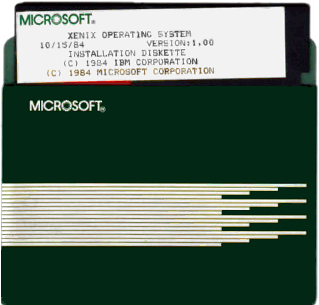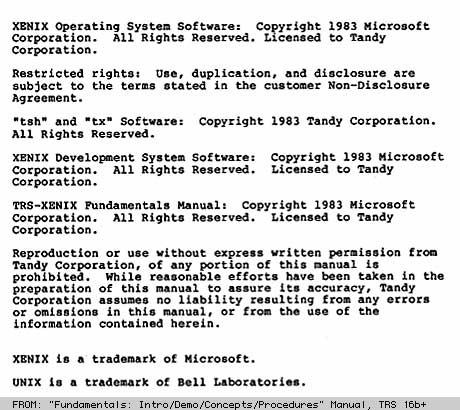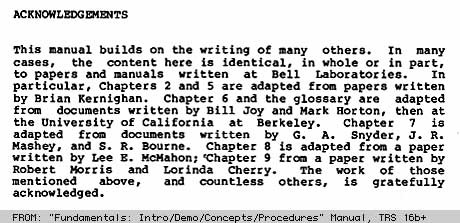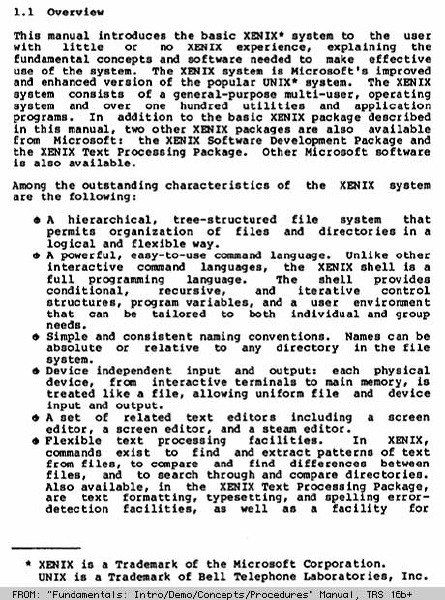From the timeline above its clear that work on XENIX and DOS was largely in parallel and XENIX greatly influenced DOS design: for example Microsoft Press' "MS-DOS Encyclopedia" shows a reproduction of a late DOS 1.25 OEM brochure which mention such future enhancements to DOS 1.25 as XENIX-compatible pipes, process forks, and multitasking, as well as "graphics and cursor positioning". That shows that Microsoft certainly tried to bring those two OSes closer, but the forks, multitasking, and multi-user support never materialized. Oddly, the flyer claims:
"MS-DOS has no practical limit on disk size. MS-DOS uses 4-byte XENIX OS compatible pointers for file and disk capacity up to 4 gigabytes."
Later XENIX became dominant Unix for Intel 286 PCs and was widely used in the industry, including of course Microsoft itself. In July 1982 Microsoft's Local Area Network (MILAN), is up and running. MILAN links many computers running XENIX and makes the transfer of e-mail easier. People who worked in Microsoft back in the mid 80's can attest that everybody in the company from Bill Gates down to the secretaries had a access to XENIX and used it daily for email. That also means that everybody used vi and should know vi before they could request vacation time. That lasted until early 90th. The last XENIX server on the MS corporate backbone was removed in late 96- early 1997. Primarily, they were used as Internet gateways, running Sendmail. Also, they functioned as internal gateways between MSMail and Exchange while the company converted everyone over to having personal mailboxes on an Exchange server.
Nice reading.
http://www.softpanor...with_unix.shtml






















